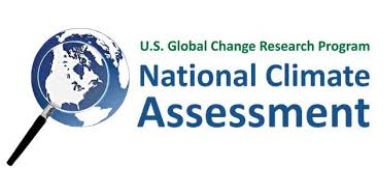The fourth National Climate Assessment (NCA4) is out in draft form for public review and comment, well sort of anyway. Commenting is unfortunately a relatively complex process, but I urge people to do it anyway. The deadline is January 31, 2018 so there is still time for carefully crafted comments.
The first obstacle is that to even look at the draft you need to register online here with the US Global Change Research Program (USGCRP). Nor is the draft supposed to be shared or quoted from, except for review purposes. Given that many of the authors are not government employees, I am pretty sure that these restrictions violate the Federal Advisory Committee Act, which requires a publicly viewable docket. But that is not going to matter between now and the end of the month.
Registrant’s names and comments will be displayed once the final version is released, so it sounds like anonymous comments are not allowed. Given the often vindictive nature of climate change alarmists, this may be a problem for some skeptics. Perhaps made up names are allowed.
Commenting itself is pretty simple once you navigate the system. However, comments on specific items in the text require precise identification of that text, including the line numbers, which is a bit of a pain. On the other hand, the USGCRP says that all comments will be specifically and publicly responded to by the authors. That is novel and could be very interesting when the comments are sound and skeptical.
Given that the draft NCA4 is over 1500 pages long, it can be hard to decide what to comment on. I recommend focusing on what are called Key Messages, as there are only about 100 or so of these. Most of the numerous draft Chapters have just 3 to 6 Key Messages. This means that once a Chapter is selected, one can focus on just a few Key Messages.
Each Key Message is typically supported by just a few pages of argumentation, which greatly simplifies commenting. Each Key Message is actually listed twice, once as part of the narrative and again with discussion and a purported justification.
The one exception is Chapter 2, titled “Our Changing Climate,” which has 10 Key Messages. This is supposed to be a summary of the physical science, but it is actually extreme alarmism. These 10 Key Messages are derived from the infamous Climate Science Special Report, which is now listed as Volume I of the NCA4. Technically the review draft we are here discussing is Volume II.
There are two main groups of Chapters. One is on systems or topics that are supposedly impacted by human cause climate change. These include energy, water, forests, agriculture, cities, etc. The other group consists of individual Chapters devoted to specific geographical regions of the US. There are also several miscellaneous Chapters, as well as an So here one can focus on what is most of interest, or about which one has special knowledge.
Most of the Key Messages are pure climate alarmism and many make well known claims that are either speculative or genuinely false.
For example, here is the very first Key Message from Chapter 2. This quotation includes the line numbers and is how it looks in the draft, which is rather awkward to read.
“Chapter 2. Our Changing Climate
Page 57
1 Key Message 1: Global Climate Is Changing Rapidly As a Result of Human Activities
2 Key Message 1: Global climate is changing rapidly compared to the pace of natural variations
3 in climate that have occurred throughout Earth’s history. Global average temperature has
4 increased by about 1.7°F from 1901 to 2016, and observational evidence does not support
5 any credible natural explanations for this amount of warming; instead, the evidence
6 consistently points to human activities, especially emissions of greenhouse or heat-trapping
7 gases, as the dominant cause.“
My comment: The claim that there is no evidence of a natural explanation is simply false. The literature is full of discussions and hypotheses regarding just such explanations.
Here is a sample Key Message from the Chapter on the US Southwest:
“Chapter 25: Southwest
Page 1093
19 Key Message 2: Ecosystems
20 Key Message 2: The integrity of Southwest forests and other ecosystems and their ability to
21 provide natural habitat, clean water, and economic livelihoods have declined as a result of
22 recent droughts and wildfire due in part to human-caused climate change. Carbon emissions
23 reductions, fire management, and other actions can help address future vulnerabilities of
24 ecosystems and human well-being.“
My comment: We do not in fact know that recent droughts and wildfires are due in part to human-caused climate change, so this claim is speculative at best and probably false.
Detailed technical comments are great, but even simple objections will be useful, especially if there are a lot of them. Be polite but be firm. Every comment counts.

Hell, there’s no comments here, David, Here’s a few links that you may like to supply to the US Global Change Research Program,…
https://sciblogs.co.nz/griffins-gadgets/2017/07/12/climate-sceptic-end-chris-de-freitas-dies/#comment-261280
Amongst all of this, please take note of the link inside this comment…
http://jennifermarohasy.com/2016/09/13040/#comment-582401
The explanation for the lack of any “greenhouse effect” is encompassed in this comment…..
https://wattsupwiththat.com/2017/11/24/can-a-cold-object-warm-a-hot-object/#comment-2685034https://wattsupwiththat.com/2017/11/24/can-a-cold-object-warm-a-hot-object/#comment-2685034
I haven’t done any registration or that sort of thing, David, but there would be enough reading material there to keep the alarmists busy for a day or two.
Kind regards and all the best for your future.